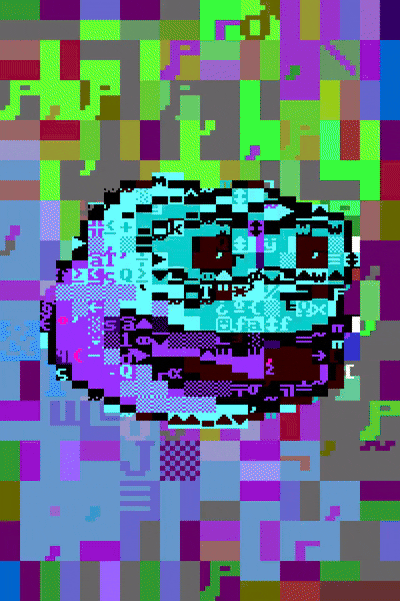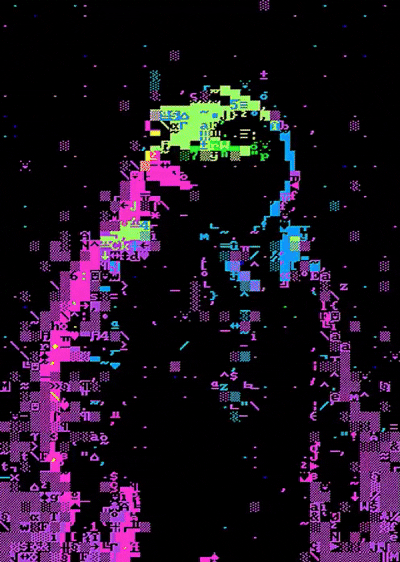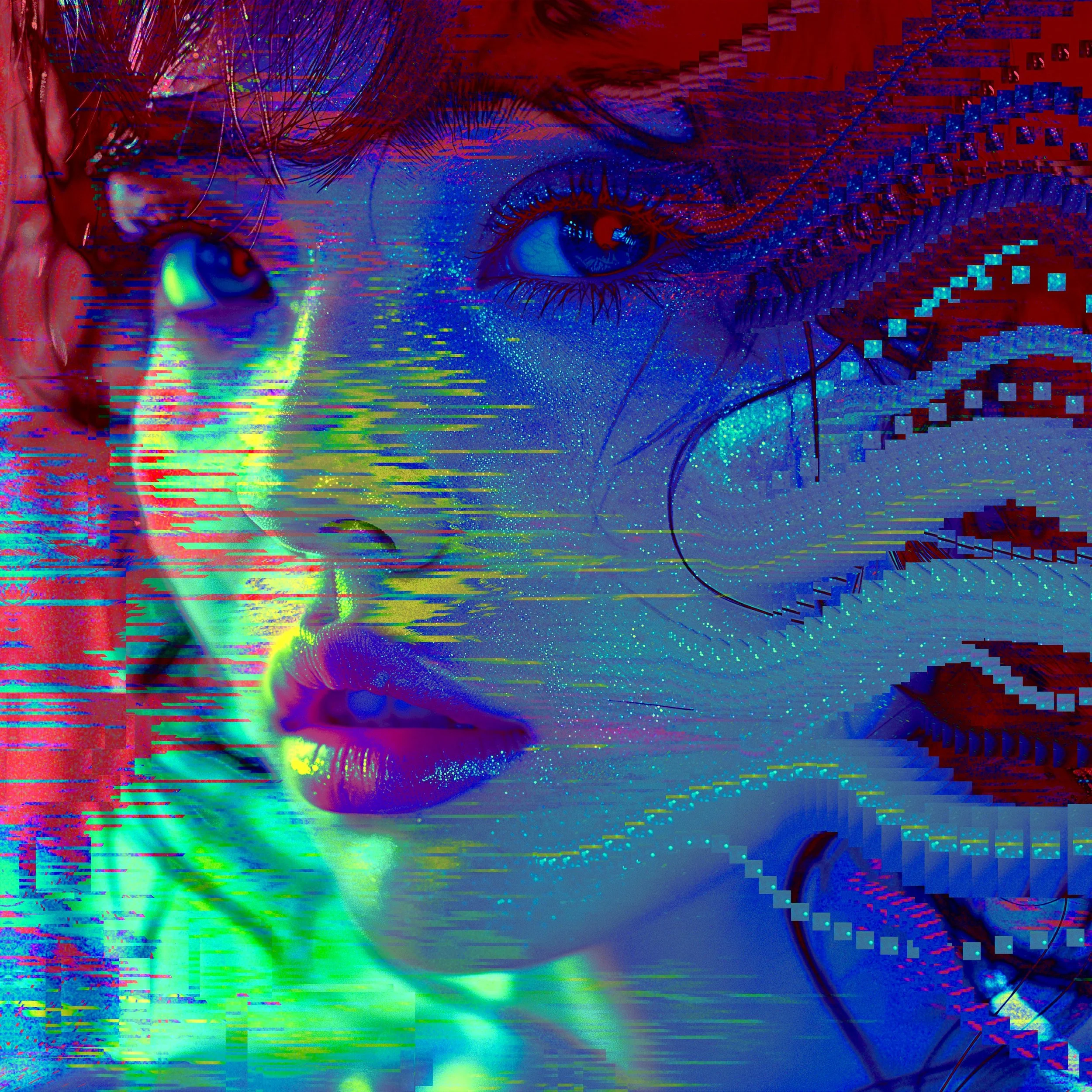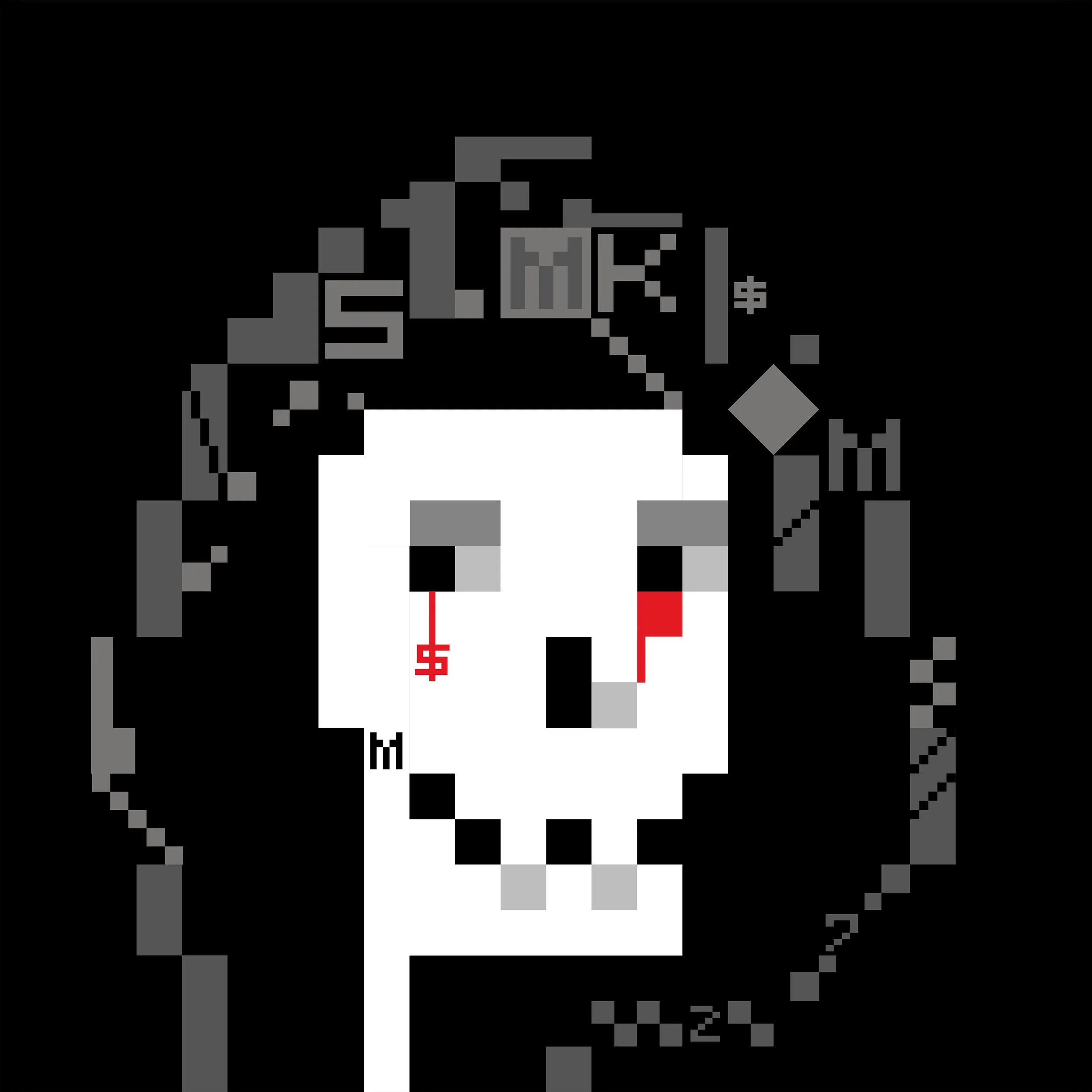Glitch as Philosophy, The Chaos-Driven Worlds of Greencross
September 29, 2025
In the lineage of cryptoart, certain names carry the weight of pioneering firsts. Greencross is one of them. A central figure in the Fake Rare movement and one of the earliest artists to openly embrace the CC0 ethos, he has consistently placed his work, and his ideas, in the public domain. From the first DOSCII Fake Rare Pepe to experimental glitch-driven collections, his practice has never been about ownership or exclusivity, but about freeing art to circulate, mutate, and live across networks without restraint.
From Machines to Code
Greencross’s aesthetic didn’t emerge from sleek hardware or modern design tools. It came from growing up with early computers that felt messy, stubborn, and strangely alive. He remembers the hum of CRT monitors, the jagged edges of DOS graphics, and the moments when technology broke down and revealed something unplanned.
“Those imperfections became a language,” he explains. Crypto later became the natural extension of this language, an open ecosystem where code itself could carry art into the world. For Greencross, pixels and protocols are not sterile tools, but “primal clay for expression.”
Glitches on Global Screens
This underground aesthetic has reached some of the most visible cultural stages, from Shibuya’s neon billboards to Times Square’s towering screens to Beeple Studios. In these contexts, Greencross’s art took on new dimensions.
“It was not the validation of scale, but the friction,” he reflects. A glitch born from hidden folders and underground forums suddenly confronted mass audiences in commercial spaces. What whispers on a small screen screams when displayed across a skyline. As Greencross puts it, “visibility is not neutral. The screen itself becomes part of the artwork.”
This insight captures one of the central tensions in digital art, scale and context don’t just amplify a work, they transform it.
Beauty in Distortion
Central to Greencross’s philosophy is an embrace of accident. He doesn’t see glitches as mistakes, but as collaborations between artist and machine. “Glitches are accidents that refuse to hide. My role is not to tame them but to stage them.”
The process lies in creating systems where unpredictability thrives. He sets up the conditions, code, devices, inputs, then pushes them until they break, allowing accidents to bloom into unexpected forms. For Greencross, distortion reveals truths that polished design cannot, it resists control, it resists perfection, and it carries the voice of both human and machine in a single frame.
Breaking the Gatekeepers
Greencross is also deeply committed to the ethos of permissionless art. His entry into NFTs was less about market hype than about liberation. “The click happened when my first collectors were not curators, but strangers across the world who minted my work directly. No gallery, no permission. Just wallet to wallet.”
That shift wasn’t just personal validation, it became a framework for his practice. He began to build with the idea that artists don’t need approval to exist. The blockchain itself became the gallery, and the community became curators simply by showing up.
Chaos Finds Its Market
That ethos culminated recently in the sell-out of his collection DITHERVOID, a body of work that pushed his glitch aesthetic further than ever. It wasn’t clean, it wasn’t polished, it was raw system decay minted as living tokens.
“The sell out felt like a signal that people are ready to embrace chaos as value,” he says. For Greencross, the moment confirmed that underground aesthetics can thrive in the open market without compromise. Rather than diluting the work, it gave him confidence to push further, to see collections not as finished sets but as portals into larger mythologies.
What Comes Next
Looking forward, Greencross envisions art that moves beyond static images into systems that live, mutate, and evolve. AI won’t just be a tool but a partner. On-chain code won’t just store, but transform. Communities won’t just collect, but participate. As he frames it, “Glitch as refusal of perfection. Glitch as resistance to control. The future of digital art will not be clean, it will be chaotic, and that is where its power lies.”
In an era where mainstream digital art often bends toward market trends and smooth surfaces, Greencross insists on the opposite, on keeping alive the messy, ungovernable energy of the glitch. His work is more than an aesthetic, it is a philosophy, a challenge, and a reminder that in imperfection lies the deepest expression of truth.
Join the discussion on Twitter…






